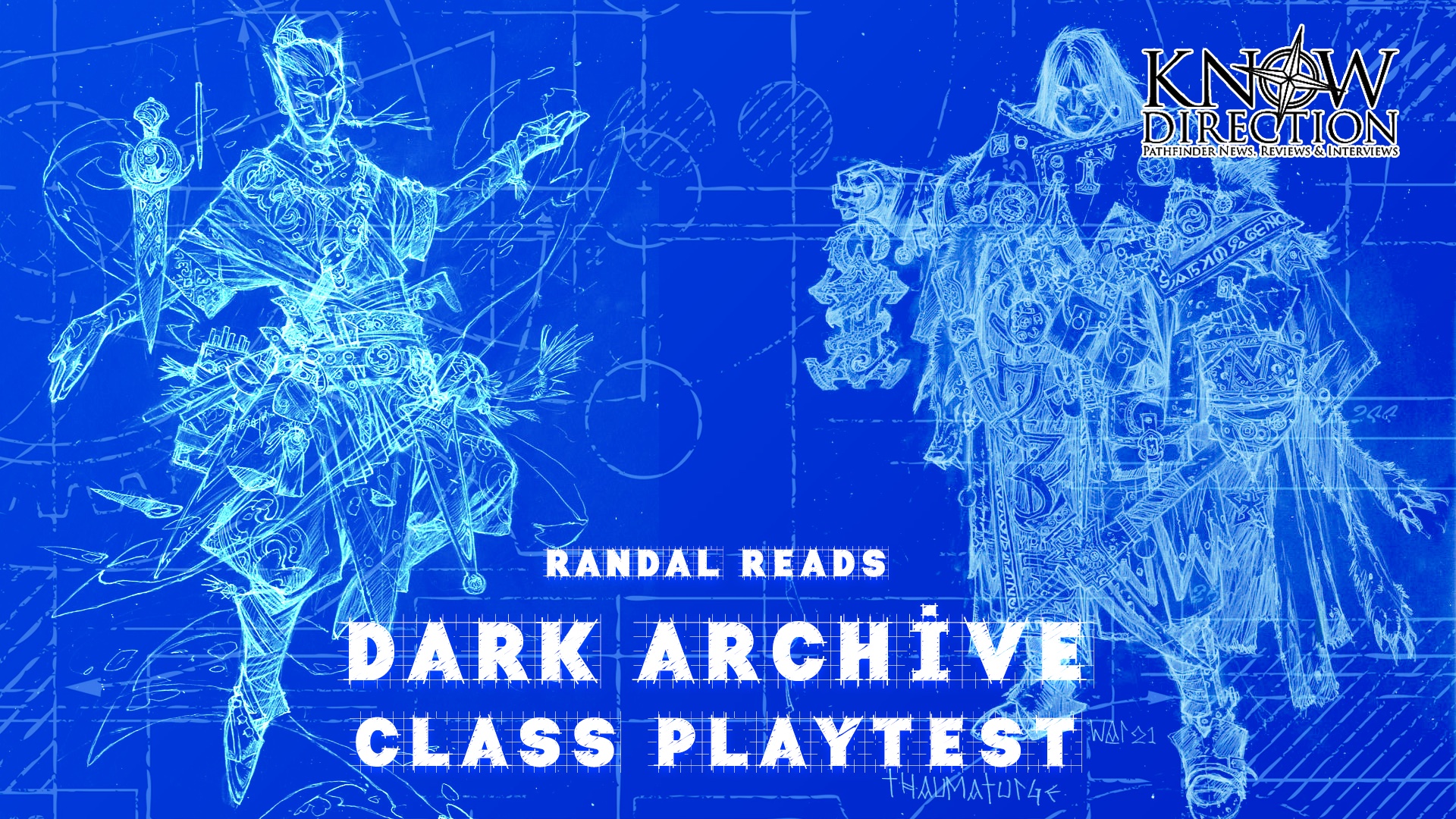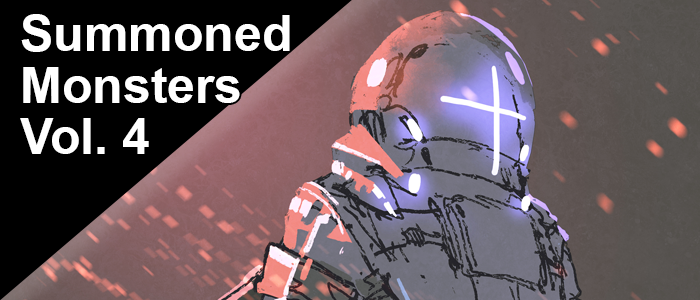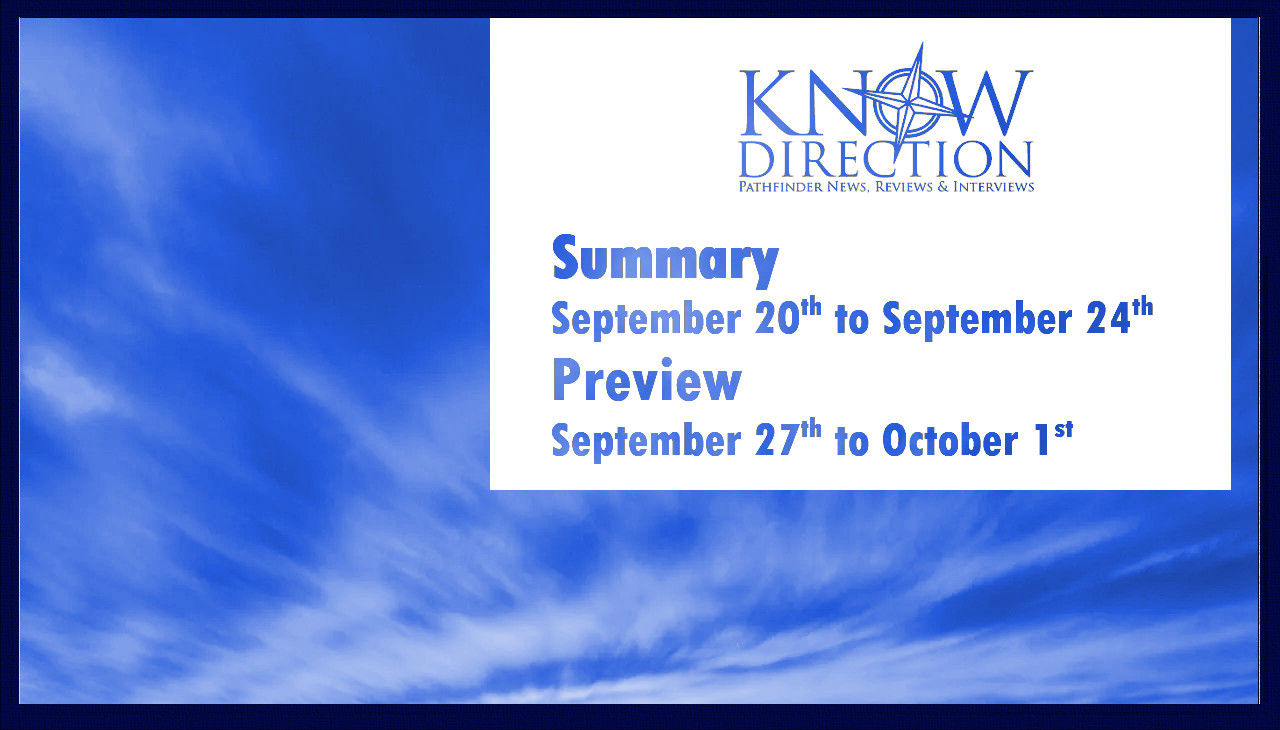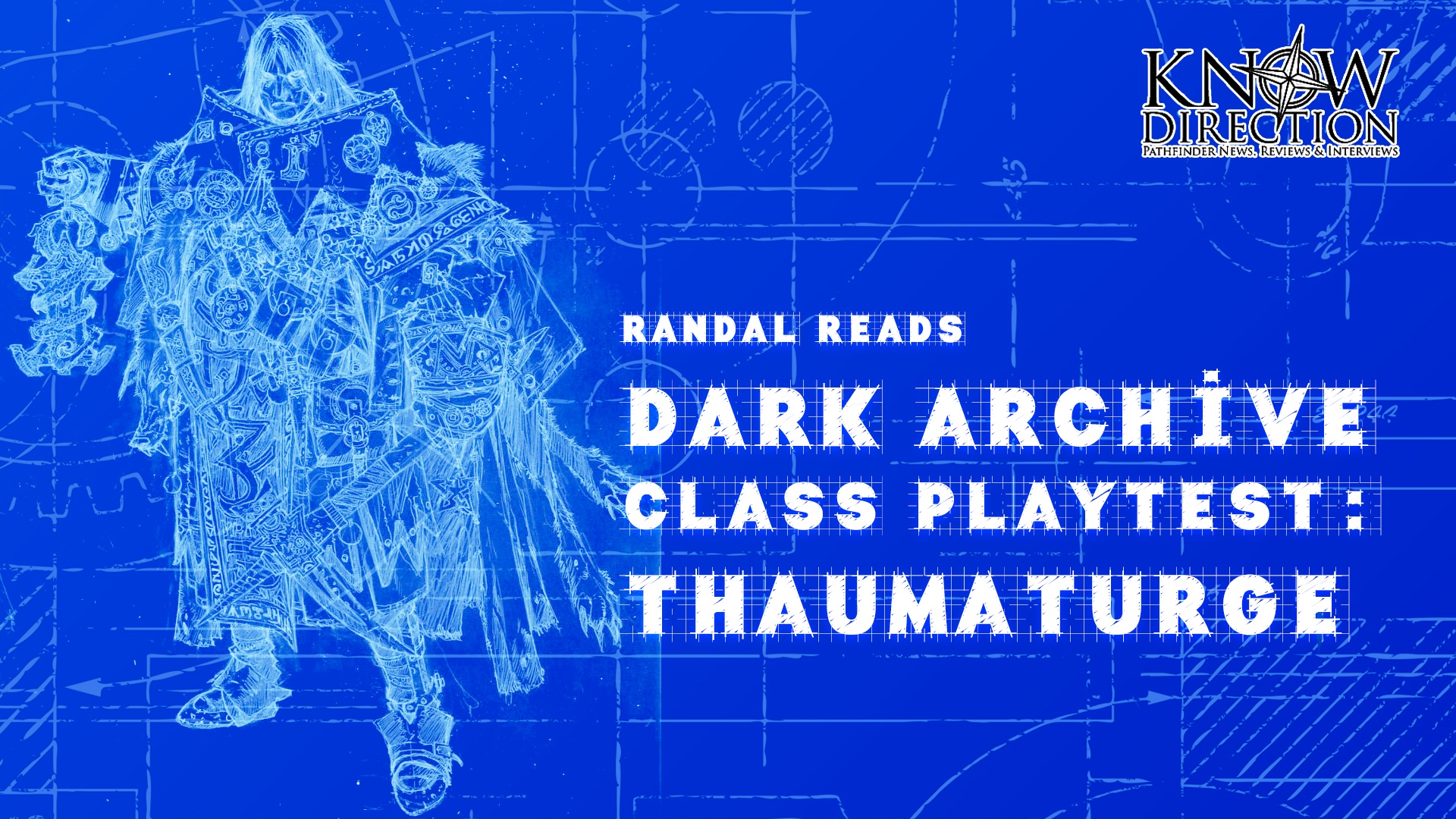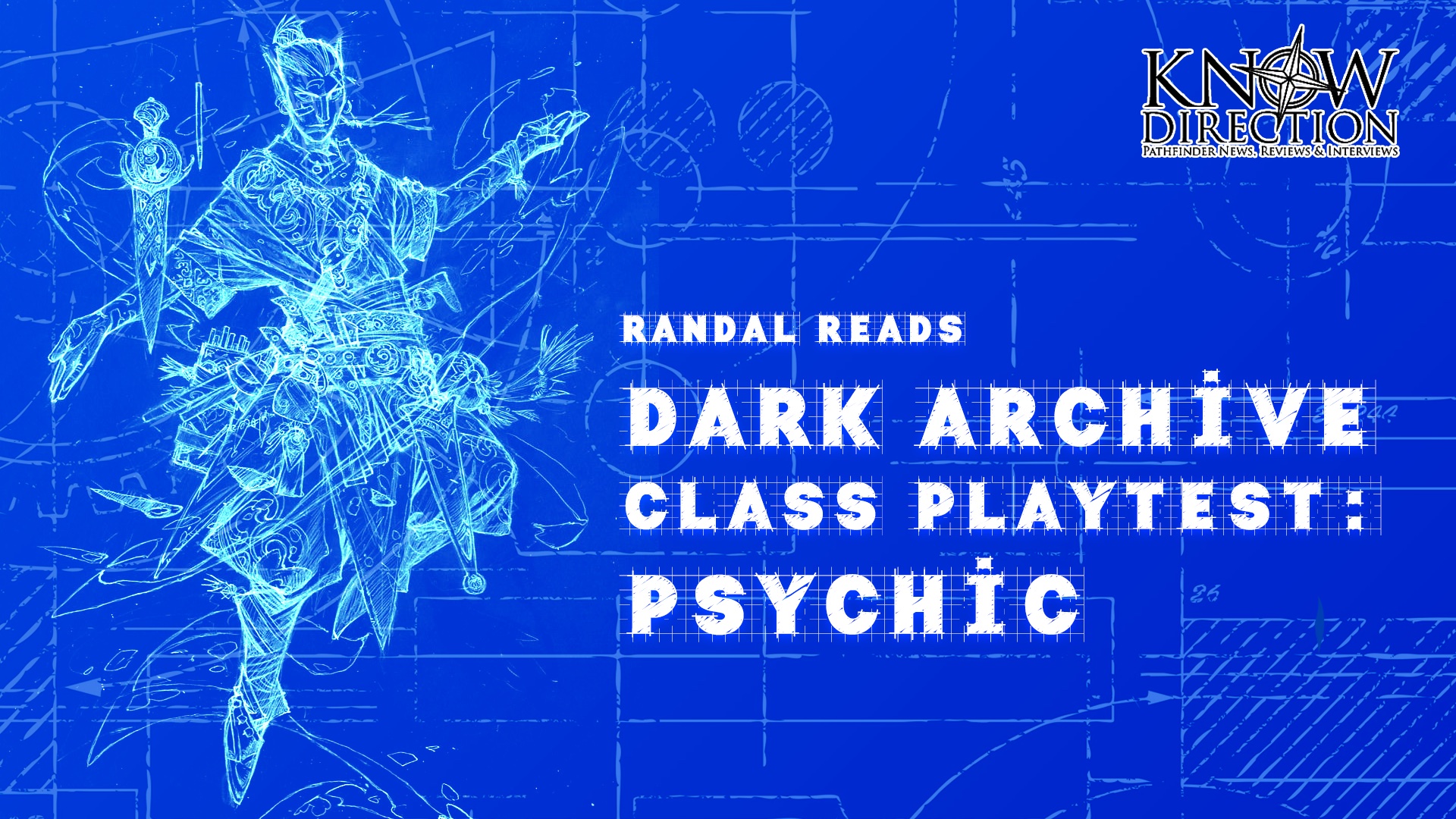Hello, and welcome back! You may know me from such reviews as Pathfinder 2e Core Rulebook, Advanced Player’s Guide, and Secrets of Magic. While I generally use this blog to review big, annual GenCon releases, I thought it would be worth it to dig into the new Dark Archive playtest. Occult Adventures was pretty popular in 1e, and I have been interested in how that would shake out in 2e.
To that end, I will be doing things a little differently this time. Usually I just read the content, gush about my favorite things and point out anything I find confusing (such as wording that might create mechanical issues) or concerning (such as wording that might create balance issues). This time, because it is a playtest meant to be tried and reviewed, I am going to try to read more critically, with an eye towards playability.
I mean, it won’t be too much different than what I did with Secrets of Magic when I covered the Magus and Summoner, but I wanted to make sure we were on the same page. Before we dive in, though, I want to take a minute to acknowledge the nature of the playtest, as well as those that created these classes, characters, and the art that goes with them. I have already written my breakdowns, so I will also be including my overall thoughts on each class as a bit of a TL;DR.
#PaizoAccountability
Depending on when you are reading this, you might be wondering why I am promoting Paizo products at a time like this. I just want to remind you that #PaizoAccountability is about Paizo’s upper management taking responsibility for its actions and treating their employees with more respect and decency. Unfortunately, promoting the amazing staff responsible for the wonderful products we love also promotes upper management. In light of that, please keep in mind that #PaizoAccountability is ongoing and you can still show support for Paizo employees by following and adding to the hashtag, as well as contacting Paizo directly.
Playtest
First thing first. Get yourself over to Pathfinder Playtest to get yourself a pdf. Please note, if you are reading this after the playtest window, there is a chance this particular playtest won’t be there as they reuse that url. The Dark Archive playtest will close October 29, 2021. Give it a read, build some characters, and get some games in! Pathfinder Society has special rules for letting you play scenarios with a playtest character and applying those credits to another character you have (since you can’t legally have a character of these classes yet). Even if you only read it and aren’t able to play any games, please help out the team by filling out the surveys. The first is a class survey, with some specific questions that are generally multiple choice/prioritization about the classes. The second is the open survey, that allowing you to free form respond to various topics.
Psychic
Class designed by James Case, iconic created by Linda Zayas-Palmer
Thaleon
“Thaleon is an artist whose creative vision reaches beyond the physical world into unseen realms. Hailing from Rahadoum, a land where religion is forbidden, he believes that effort is the foundation of change and that each person has a duty to cultivate their own talents and use them to shape society for the better. Thaleon embraces his ties to the psychic forces that flow from his emotions and strives to understand them, even as they sometimes surge beyond his control.”
To be completely honest with you, I can’t remember how the 1e Occult classes functioned. When 2e came out, and Bard was an occult caster I thought “oh, that’s how they are doing occultism” … and, wow, was I wrong. The division of traditions to allow for occult casters is great. The bard as an occult caster made sense (even if the only occult in Core). But it did not set the scene for what they are doing with the psychic. Many elements of it are familiar to me from the little pieces I do recall from 1e occult classes. But, for reasons I am not sure about now, I was honestly expecting something more like Wizard … but occult. What we have here is nothing like that, and it is very obvious very early. In spite of this, I do still compare the psychic to the wizard for “balance” because I feel like psychic is “the” occult class, just as wizard is “the” arcane class. Sure there are similarities, and of course the basic mechanics of spells are the same, but they are nothing alike in flavor (which is as it should be).
We get a class that explores the differences between the Subconscious and Conscious minds. You select which type of each you want to personify, and they each affect you and your spellcasting differently. The playtest offers up two subconscious minds to choose from … the emotional and the precise, in addition to determining your key ability (Cha and Int respectively), they also determine a weakness that you have. The choices for your conscious mind allow you to determine the direction you want to focus your talents in. The choices presently are (more or less) telekinesis, third eye, and telepathy. This choice determines a large portion of your spellcasting ability, including all of our Psi Cantrips. These are a great spin on cantrips that really do a nice job of powering them up and tying them to your psychic powers.
Psi Cantrips –Each class has 4, 2 existing cantrips, one new 1st-level cantrip unique to your choice, and a 4th-level cantrip unique to your choice (available via a feat). As cantrips, you have unlimited access to them, but they can be boosted via Amps.
Amps – Amps are special modifiers that you can apply to cantrips (not unlike how we heighten them) by spending Focus Points to do so. The content includes amps specific to each cantrip as well as some generic amps available via feats you can apply to various cantrips. By tying them to focus points, you are limited in how many you can cast, unless you Unleash Your Psyche.
Pscyhe – Your Psyche can be unleashed via various actions (you start with one but can gain others via feats) that provide a benefit and a drawback. It lasts 3 rounds and during this time you can amp a cantrip each round without spending Focus Points.
Yeah, let that sink in. With this much of your class mechanics tied into your mind, spells, and how to access and use them, it shouldn’t be any surprise that your feat selections are more or less ways to improve or expand on these same concepts. More Amps, ways to Unleash, more spells per day, accessing powers from other disciplines, it is all there. I am really looking forward to building a Psychic or two just to see if it plays the way it reads.
If you like casters and you like occultism. This is your class. If you wanna use TK, your third eye, or converse with the whispers all around us … then this class is for you. While your feats properly enhance and alter your powers, it is your powers that mostly define you.
Thaumaturge
Class designed by Mark Seifter, iconic created by Avi Kool
Mios
“As a young adult driving their night coach on the streets of Ustalav, Mios was attacked by a creature and afflicted with a terrible curse. After hunting through rumors by the light of their coach’s lantern, they managed to save themself by piecing together a cure. Now aged into an experienced monster hunter, Mios believes in second chances but not third ones, fearing neither evil nor death.”
Where the psychic is a casting class, through and through (even if it plays different than others), the thaumaturge is something else entirely. I believe it was said that the original layout for this class was inspired by other 1e occult classes but over time it changed so much that they felt the need to change the name. I can agree, because as somebody that only played one or two sessions of occult content in 1e, I can’t place what this class was supposed to be from.
In some ways it is a pure combat class, but that isn’t always the case. While your choice of implements certain determine a theme for your character, those choices do not force you into any specific build path. If I asked 5 people to build a character and I told them all which implements to pick (and even when to boost which), I would be very surprised if two of them came up with the characters that felt the same. While many of the feat options are just pulled from (or inspired by) by existing archetypes (Familiar Master, Ritualist, Scroll Trickster, Talisman Dabbler) I feel like they are a perfect fit. To be completely honest, I feel like they could just put some wording in there that you gain access to those archetypes/feats without needing to worry about the 2 or 3 feat minimums and save the words from recreating those feats for more new feats … but that’s just a wish I have to maximize the awesomeness of this class with new content.
Implement – There will be 9 implements, the playtest only offers 5. You start with one and pick up two more over time. Each has an ability it impart when you get it, as well as when you upgrade it (one of which you can increase twice).
Esoterica – Your flair. The collection of occult artifacts you collect because everything you encounter is weak to something.
Find the Flaw – Your ability to Recall Knowledge and figure out which of your
flairesoterica creates a weakness for your foe.Esoterica Antithesis – The act of applying your esoterica to a creature to create/implement the weakness.
Unlike the psychic, a lot of what defines you as a thaumaturge is the choices you make with your feats. Admittedly, having 9 implements to choose from will greatly vary the different builds from each other, having only 3 features each really leads to customizing your build primarily through your feats. As I haven’t built multiple thaumaturges yet, I want to point out that this is my initial perception. While I like this, in theory, the fact that a bunch of the feats are basically existing archtypes leaves me feeling like this class isn’t breaking as much new ground as it could. I do really like the archetypes it includes, they really do feel like the various routes that a thaumaturge can take, but all those feats could have been new feats or features with riders that unlock those archetypes.
Summary
I have a couple minor issues with some wording (they are called out in the following posts), but this is a playtest, after all, and I have every confidence they will tighten it up before it goes to print. Both of these classes fit well within the framework of occultism in Pathfinder/Golarion as I understand it. Both of them bring back some of what we had in 1e while firmly standing out as 2e constructs. If this is any indicator of what we can expect from Dark Archive, I am very excited to see what the rest of the book has to offer.
That about covers my overall thoughts on the Dark Archive playtest. Tomorrow begins my deep dive as I cover the class features of the psychic. As always, please join us at our Discord server https://discord.gg/Rt79BAj to let me know what you think or simply have a chat!

